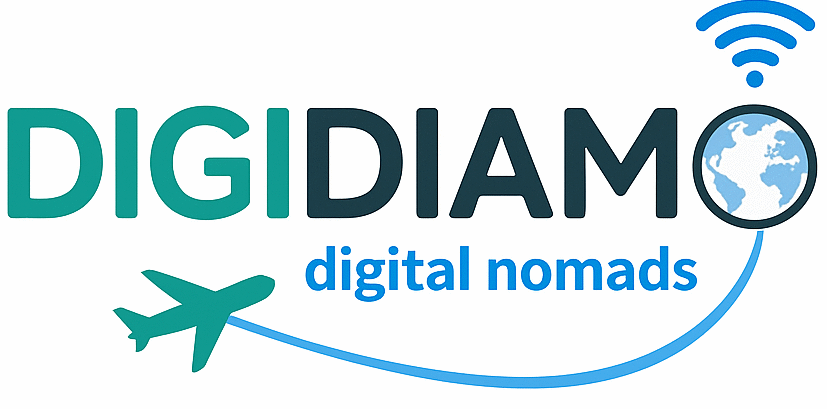Best remote jobs for digital nomads to land in 2025
Remote work has become one of the strongest drivers of the digital nomad lifestyle. The ability to earn while moving between countries has transformed from a dream into a realistic option for thousands of professionals. Yet not every remote role adapts well to constant travel. Some jobs require long hours of synchronous meetings or rely on specific regional licenses. Others are built for flexibility, letting you work from a beach café or a mountain lodge as long as the internet holds steady. To understand how these roles fit within the broader context of skills, tools, and routines, the complete remote work for digital nomads guide gives a full blueprint.

What makes a job nomad friendly
Before diving into specific roles, it is important to define the qualities that make a job work well for nomads.
- Results matter more than presence on a clock.
- The role is location independent by design.
- Pay is strong enough to cover living costs in mid-range cities.
- Workflows run smoothly with just a laptop and cloud tools.
Jobs that meet these rules reduce stress about time zones and contracts, leaving more space for travel and focus.
High demand sectors for nomads
Software and product development
Coding and product roles remain the most portable. The global demand for developers and engineers is high, which means companies actively recruit across borders. Full stack developers, DevOps specialists, and product managers can join distributed teams using tools like GitHub, Linear, and Slack. Entry salaries often start near 70,000 USD and rise quickly with proven projects.
Content strategy and copywriting
Brands publish around the clock. Writers and editors who understand both human readers and search intent have steady work. SEO knowledge is an advantage. Rates vary from 30 to 80 USD per hour depending on expertise and niche. Three strong writing samples often open more doors than long résumés.
Digital marketing and ads
Media buying and growth marketing are measurable skills. Employers value clear results, not office presence. A mid-level specialist can earn around 3,000 USD per month on retainer. Case studies showing ad spend growth or lower costs per conversion are more persuasive than certifications alone.
UX and graphic design
Remote designers who can run online user interviews and deliver clean visuals in Figma are in demand. Adding motion design skills provides an edge. Clients judge portfolios above anything else. Freelance rates usually sit near 50 USD per hour.
Customer success and support
Keeping users happy is vital for subscription-based businesses. Support reps and success managers with empathy and documentation skills are valuable. Growth into management is common, even if entry salaries are lower than technical fields.
Online education and coaching
Tutoring and coaching have grown since the pandemic. Teaching languages, coding, or fitness over Zoom pays between 15 and 100 USD per hour depending on specialization. Recording evergreen courses adds potential passive income, though promotion requires effort.
Emerging niches
Some industries are newer but growing fast. Getting in early can mean less competition.
- Web3 community management: Moderating online groups and balancing culture with conflict.
- AI prompt engineering: Crafting precise prompts for industries like law or medicine.
- Sustainable travel consulting: Helping hotels audit eco-friendly practices.
- Remote operations for micro SaaS: Running billing, support, and light marketing for lean products.
These niches often involve a learning curve but reward early movers.
Where to find opportunities
Curated job boards
- We Work Remotely focuses on stable, salaried jobs.
- Remote OK allows filtering by time zone overlap.
- Dynamite Jobs screens companies for remote culture.
Freelance marketplaces
- Upwork has volume but strong price competition.
- Contra and TopTal are selective but lead to higher-quality gigs.
- Building a niche profile works better than applying to everything.
Direct outreach
List startups you admire. Follow their updates, comment on posts, then pitch tailored ideas. Personalized outreach often skips long HR queues.
Crafting a portable résumé
Remote résumés need to highlight independence. Remove location headers and emphasize outcomes.
Example: “Reduced churn by 15 percent through asynchronous onboarding videos across three continents.”
Add your time zone in UTC format and include a short video introduction. Recruiters like to put a face to the name.
Managing time zones
Choose roles that fit your natural rhythm. If you are in Morocco and work best in mornings, European clients are ideal. If you prefer nights, US west coast companies may suit you better while you are in Asia. Tools like World Time Buddy help map overlapping hours.
Income stability for nomads
Freelance income often fluctuates. Build layers to reduce stress:
- One anchor client that covers essential costs.
- Two or three side projects for growth months.
- Productised services like templates or audits sold on Gumroad.
Automating invoices through PayPal or Wise keeps payments smooth.
Soft skills that matter
Beyond technical expertise, soft skills shape long-term success.
- Clear writing for asynchronous teams.
- Self management with no manager nearby.
- Cultural awareness for diverse teams.
- Patience when travel disruptions interfere with schedules.
Case study snapshot
Sara, a UX writer from Spain, left Madrid and found a remote contract with a Berlin fintech. The salary was 68,000 EUR. She moved to Medellín, cut her living costs, and saved 35 percent of her income while enjoying salsa classes in the evenings. Her key advantage was a strong portfolio site with live product examples.
Red flags to avoid
- Jobs labeled remote but requiring constant video presence.
- Payment only in crypto without written contracts.
- NDAs that block future work for years.
- No clarity on holidays or benefits for salaried roles.
Walking away early saves stress.
Upskilling for long-term growth
Stay competitive by joining short cohort courses, contributing to open source, or shadowing senior freelancers through mentorship. Speaking at online events also builds credibility.
Budgeting during the search phase
Keep three months of living costs before quitting a stable job. Some searches move quickly, others take months. Staying in affordable hubs like Bansko or Chiang Mai makes savings last.
Final checklist before accepting a role
- Confirm pay currency and cycle.
- Check if payroll runs through a reliable service.
- Review intellectual property clauses.
- Align working hours clearly.
- Look for reviews of the company from past employees.
Conclusion
The best remote jobs for digital nomads in 2025 balance income with flexibility. Roles in development, marketing, content, design, and education give both freedom and security. By layering income, managing time zones, and avoiding red flags, you can sustain the lifestyle long term. If you want to dive deeper into independent work streams, our guide to top freelance jobs for digital nomads in 2025 explores the strongest freelance paths.






